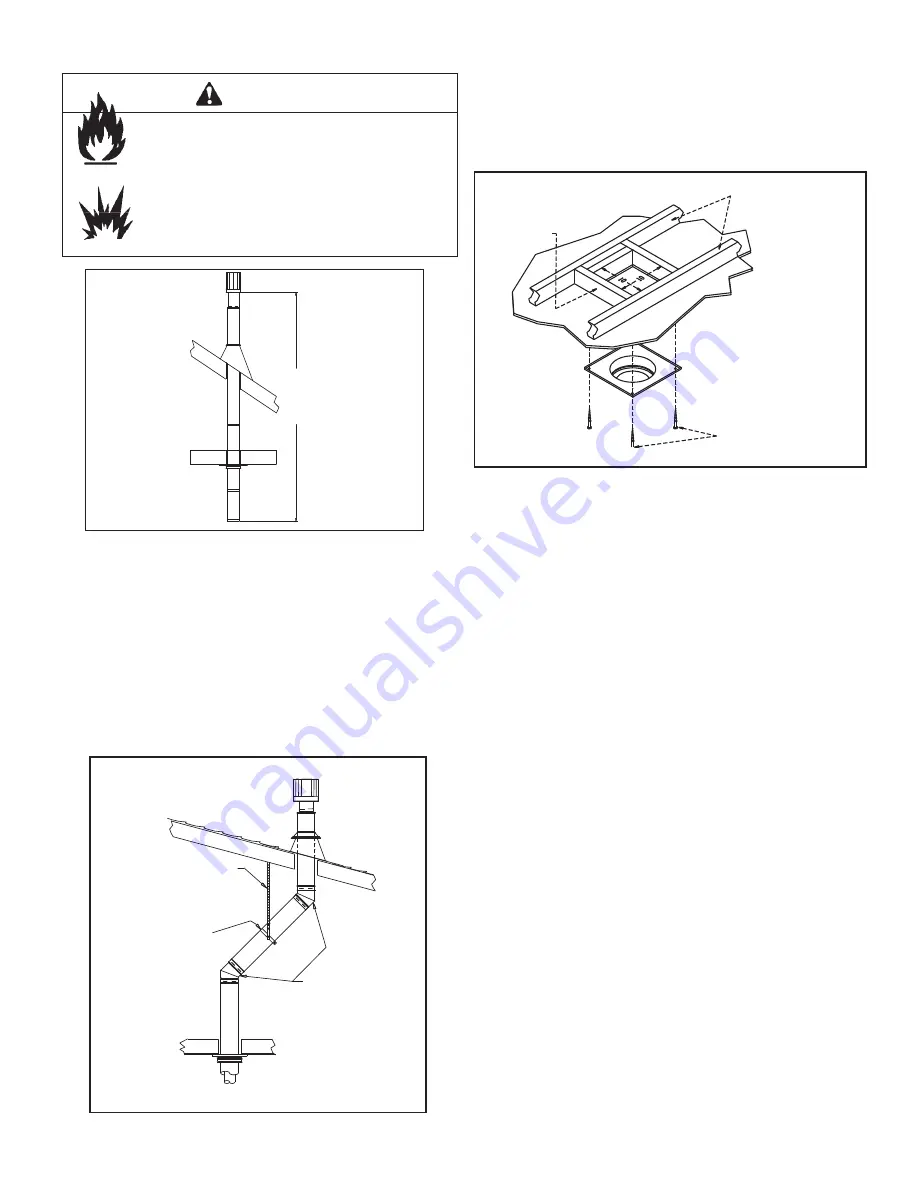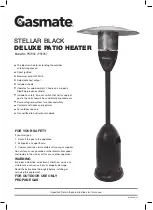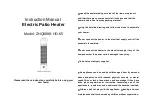
15
Heat & Glo • TIARA II-B • 7011-148 Rev. G • 10/12
Plumber’s Tape
connected to
Wall Strap
Wall Strap
Two 45˚ Elbows
Step 2.
S
et the gas appliance in its desired location. Drop a plumb
bob down from the ceiling to the position of the appliance
flue exit, and mark the location where the vent will penetrate
the ceiling. Drill a small hole at this point. Next, drop a
plumb bob from the roof to the hole previously drilled in the
ceiling, and mark the spot where the vent will penetrate the
roof. Determine if ceiling joists, roof rafters, or other framing
will obstruct the venting system. You may wish to relocate
the appliance, or to offset, as shown in
Figure 5.12
to avoid
cutting loadbearing members.
Figure 5.11
Figure 5.12
35 ft. (11m)
MAXIMUM
Fire Risk.
Explosion Risk.
Maintain vent clearance to combustibles as speci-
fi ed.
WARNING
• Do not pack air space with insulation or other
materials.
Failure to keep insulation or other materials away
from vent pipe may cause fi re.
Step 4.
Assemble the desired lengths of pipe and elbows necessary
to reach from the appliance up through the round support
box. Ensure that all pipe and elbow connections are in their
fully twist-locked position. Assemble as instructed.
Step 5.
Cut a hole in the roof centered on the small drill hole
placed in the roof in Step 2. The hole should be of sufficient
size to meet the minimum requirements for clearance to
combustibles, as specified. Continue to assemble lengths of
pipe and elbows necessary to reach from the ceiling support
box/wall thimble up through the roof line. Galvanized pipe
and elbows may be utilized in the attic, as well as above
the roofline. The galvanized finish is desirable above the
roofline, due to its higher corrosion resistance.
NOTE:
(1
) If an offset is necessary in the attic to avoid obstructions,
it is important to support the vent pipe every 3 ft.
(914mm) to avoid excessive stress on the elbows, and
possible separation. Wall straps are available for this
purpose
, Figure 5.12
, page 16.
(2) Whenever possible, use 45° elbows, instead of 90°
elbows. The 45° elbow offers less restriction to the flow
of flue gases and intake air.
Step 3.
To install the round support box/wall thimble cover in a flat
ceiling, cut a 10 in. (254mm) square hole in the ceiling,
centered on the hole drilled in Step 2. Frame the hole as
shown in
Figure 5.13
.
Framing
1 - 1/2 in. (38mm) Long
Wood Screws
Ceiling
Joists
Figure 5.13
Step 6.
Slip the flashing over the pipe section(s) protruding through
the roof. Secure the base of the flashing to the roof with
roofing nails. Ensure the roofing material overlaps the top
edge of the flashing as shown in
Figure 5.14
. Verify that
the chimney is the required height above the roof. See roof
pitch table,
Figure 4.3,
on page 9.
















































